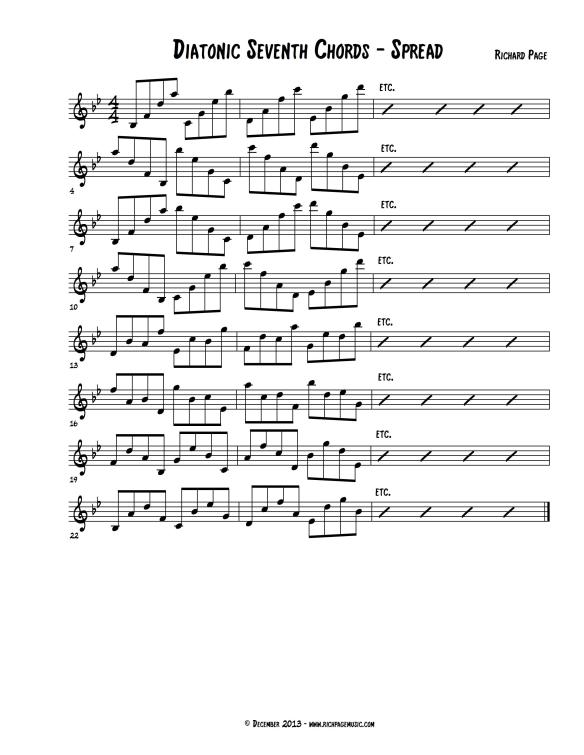I’ve been studying out of Yusef Lateef’s Repository of Scales and Melodic Patterns for quite a while, and under Tim Price’s guidance, I’ve come up with some lines that fit his asymmetrically expanded dorian scale.
Lateef writes the scale – D, F#, G, C, E, G#, A, D
If you look at the pattern that Lateef has presented, interval-wise, the pitches move (starting on both the D and E) in major thirds, then a half-step and then a fourth. If you use the D and E as temporary tonics, you have – root, major third, fourth and flat seven.
The way that I approached the initial scale was to see it as an A minor dorian scale with a bebop alteration at the seventh degree (A minor = G, G#, A).
If you rewrite the scale in the most stepwise motion – A, C, D, E, F#, G, G# (for this purpose, I’ve removed the second D).
I wanted to get as linear as possible with the idea, so I rewrote the pitches to make it modal.
One of the reasons that I love working out of this book is because there are so many ways to approach Lateef’s ideas, and you can bring out many colours in your playing by manipulating the exercises.
Another reason that I find this book to be a useful resource is because it expands your ears! I’ve explained my theory behind my approach, but at the end of the day, you need to be able to hear this sound, or colour before it will come out in your playing. It doesn’t hurt (and I highly recommend) to take this to the piano and playing the chords in the matrix (underneath the scale) against the lines and scale. It will help you get your head wrapped around the sound.
I’ve included some examples, as well as the rewritten scale, below.
Enjoy!


